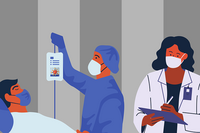Health Care Systems / 08.10.2024
Resources for Healthcare Facilities: Providing Safe, Equitable, Cost-Effective Care
The healthcare landscape today is a complex patchwork of regulatory, financial, and ethical considerations that must be navigated deftly to provide top-notch patient care. Healthcare facilities, whether small practices or large hospitals, need an arsenal of resources to manage these various demands effectively. From guidelines on health equity to cost-containment strategies, maintaining a high standard of care requires constant vigilance and adaptation. Below, we delve into the crucial resources that can help healthcare facilities meet these challenges head-on and continue to offer services that are safe, equitable, and cost-effective. Keep reading to discover how your facility can leverage these tools for improved patient outcomes and overall success.





